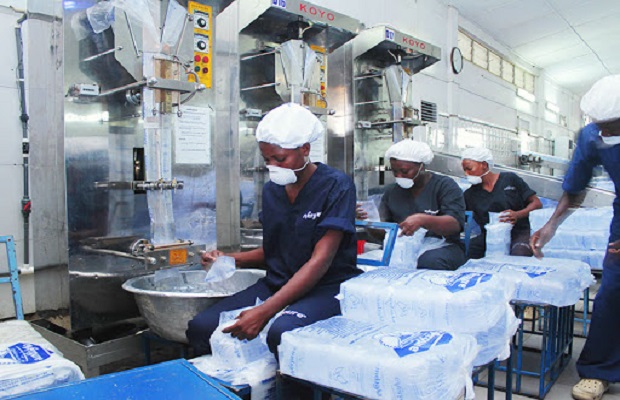There is no doubt, water is one of the most essential commodities needed for survival by all living organisms.
The growth of the middle class in Africa in general, and Nigeria to be specific, has led to a need for hygienically produced and well packaged food products like bottled water.
The market for packaged water is high and cut across all parts of the country. With a population of over one hundred and eighty million (180,000,000) people, and an estimated national population growth is 5.7% per annum, Nigeria has a large and sustainable market for packaged water.
The demand for packaged water is very high because it is consumed on a daily basis, by all people of all ages, race or religion. The raw materials needed to produce bottled water is readily available in abundance in Nigeria.
Setting Up Cost
We prepared a well researched business plan that envisaged a packaged water producing plant with a production volume of 1000 bags of sachet water per day.
You will need a building to set up your factory in. As per NAFDAC regulations, the factory location must not be in close proximity to a cemetery, refuse dump, fuel depot, pit latrines, etc. The factory should have a production room, raw materials storage room, finished products storage room, clock room, office, toilet and bathrooms.
You will also need an industrial borehole as your water source. Cost of these depends on your location.
The machinery you need include:
Automatic Sealing Machine
Sand and Carbon Filters
UV Sterilizer
Jumbo Filters
Candle Filters
Reverse Osmosis Water Treatment System
The cost of the complete set of machinery is estimated to be two million, five hundred and fifty thousand naira (₦2,550,000). You will also need to budget about one million naira (₦500,000) for installations, test-run and training for your staff.
You will also need a vehicle for transporting your products to customers. It is very important to build a strong distribution channel for distributing your products to customers. The success of this business is deeply rooted in the quality of your product and your ability to reach and quickly sell to customers.
Profitability
With an average selling price of a bag (20 sachets) of sachet water at seventy naira (N100), a company that is able to produce and sell 1000 bags of sachet water weekly can turn in a revenue of ₦2,800,000 monthly (working for 28 days per month).
Cost of production averages at ₦40 per bag (20 sachets), so estimated monthly [b]gross profit[/b] is ₦1,680,000.
Also read: Bottled Water Production In Nigeria
Wishing you all the best in your quests.
Get Our Pure Water Production Business Plan
Buy our pure water Production business plan at the promo price of N10,000 only and get the following free e-book.
Start, Run and Grow Your Business: This e-book is loaded with tips and advice for anyone starting a new business, and existing businesses looking to take their company to the next level.
Note: Promo price ends soon, after which you will have to pay the original price of N20,000.
To get the business plan,
Please send us a message via WhatsApp : 09022106607 or Email: support@planbiz.com.ng
OR
